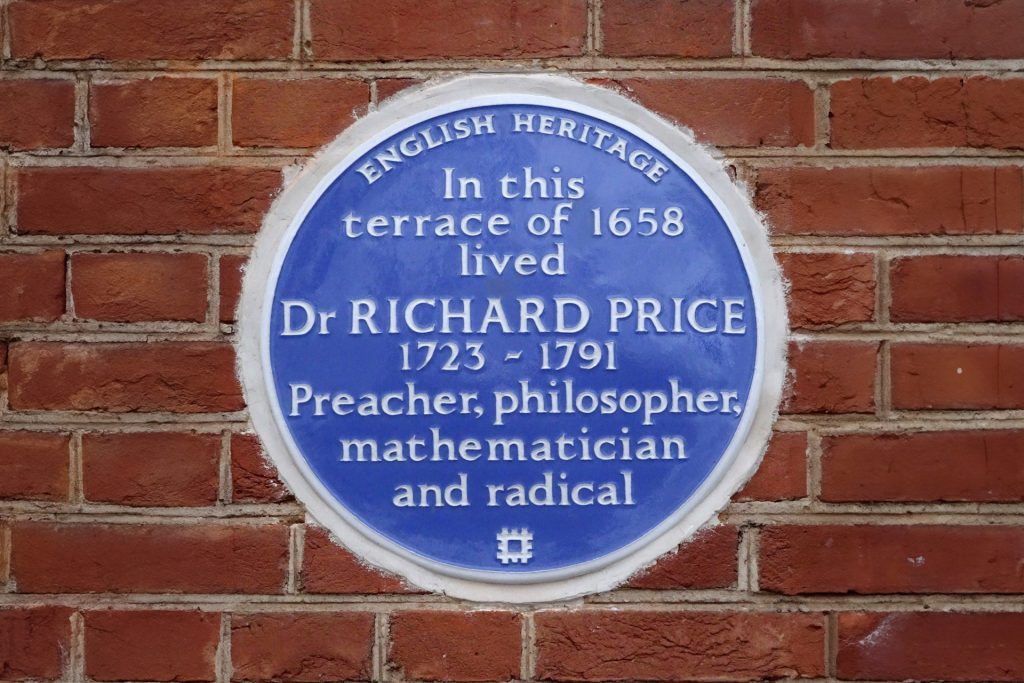Nestled on a leafy green in an area that is constantly struggling to decide if it is Hackney or Islington is the UK’s oldest terraced house. A nice if inconsequential fact. The kind you’re not exactly better off for knowing but one you might be somewhat pleased to find out from the little blue plaque as you walk past. What is a little more interesting, however, is who lived there.
London’s oldest surviving terraced house received its plaque not for the fact its old, terraced, or that it survived the Great Fire of London and the Blitz but because of the 18th century radical, mathematician, political theorist and preacher who lived there.
A revolutionary green
Dr. Richard Price was a polymath, political in his defence of the American revolution, philosophical in his treatises on patriotism, theological in his sermons at the local Unitarian church, and scientific in his fellowship of the Royal Society.
During his time in Newington Green he also rubbed shoulders with an extensive intellectual and social network, one that contains many names that would be familiar to us today.
His friends included Joseph Priestley, the chemist credited with discovering oxygen, and Benjamin Franklin, Thomas Paine, and Thomas Jefferson: a group of friends that are said to be responsible for the house being raided by the police more than once.
He was also a mentor to the feminist Mary Wollstonecraft, who was part of his congregation at the Unitarian chapel and who credited Price for inspiring her to write A Vindication of the Rights of Women. Wollstonecraft’s husband William Godwin is considered one of the first modern proponents of anarchism and their daughter was Mary Shelley, author of Frankenstein.
An insurance connection
In this day and age the group is considered progressive, but at the time they were branded radical and revolutionary. Many were opposed to the established church, so were unable to attain degrees and were forced to set up their own schools.
As a rural suburb, Newington Green was close enough to the city and its coffee shops for the exchange of ideas yet far enough away for a dissenting community to flourish; a key reason for the wealth of infamous names associated with it.
Despite this detachment from the city, interestingly, Price also played a role in the development of life insurance in Great Britain; he authored the Northampton Mortality Tables and his papers on life assurance and annuities were widely used by emerging insurance companies at the time.
The impact of these figures and the intellectual history of the time has largely been lost to the City and its institutions today, but in a small way now, they have also been made much closer.
Most mornings at the Green you can spot a number of suits and brollies yawning as they wait for the half hour bus ride on the 141 that will take them to Bank.


